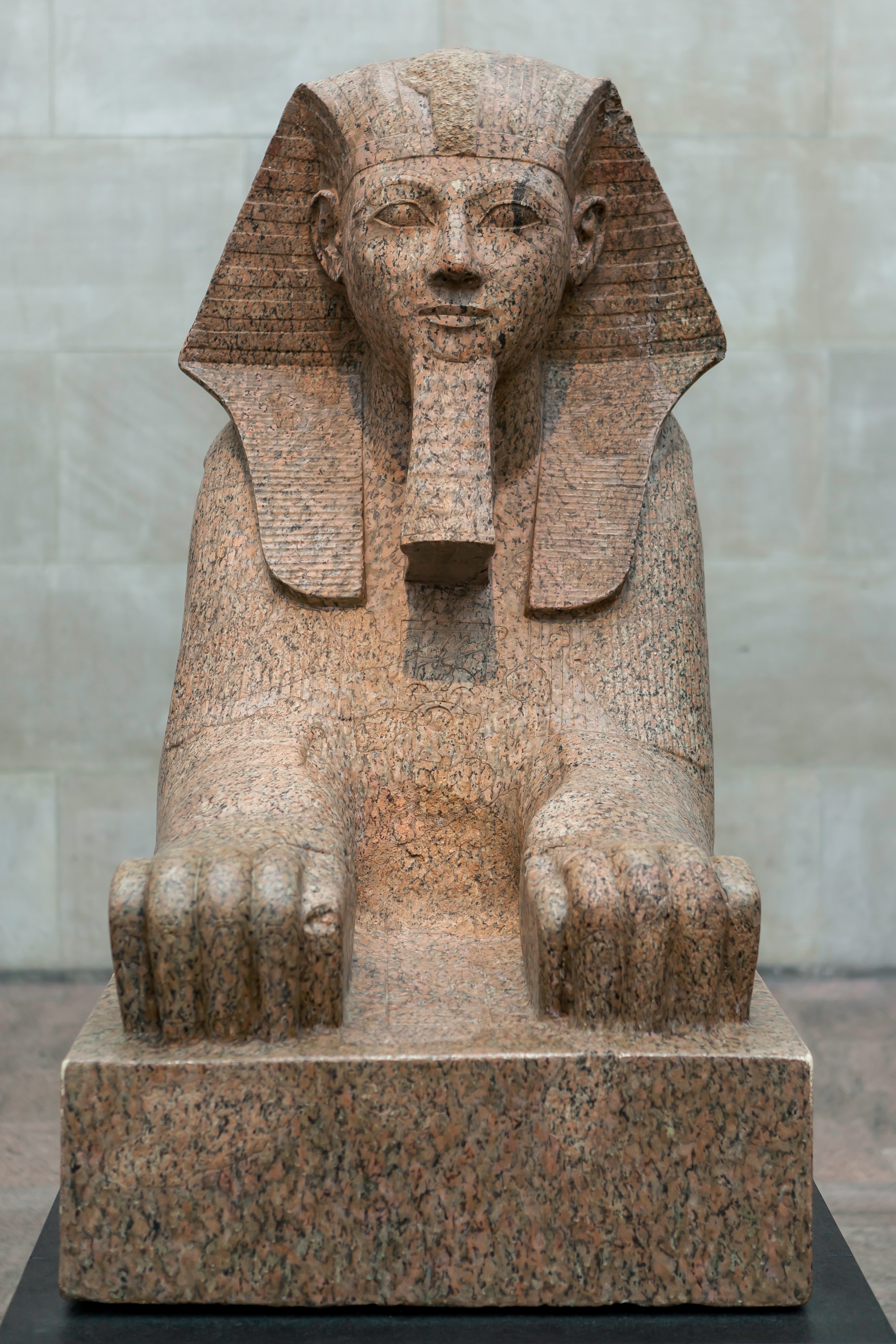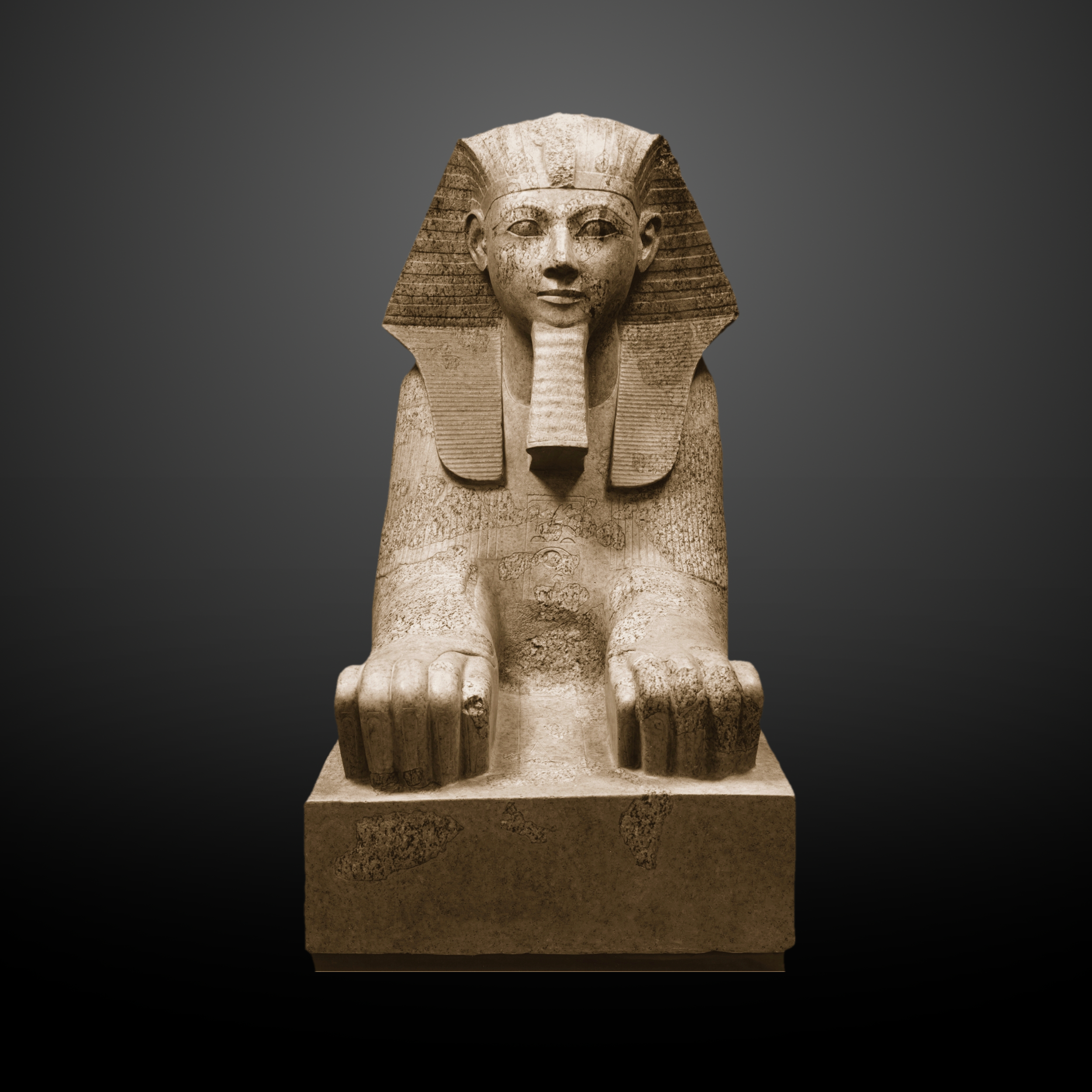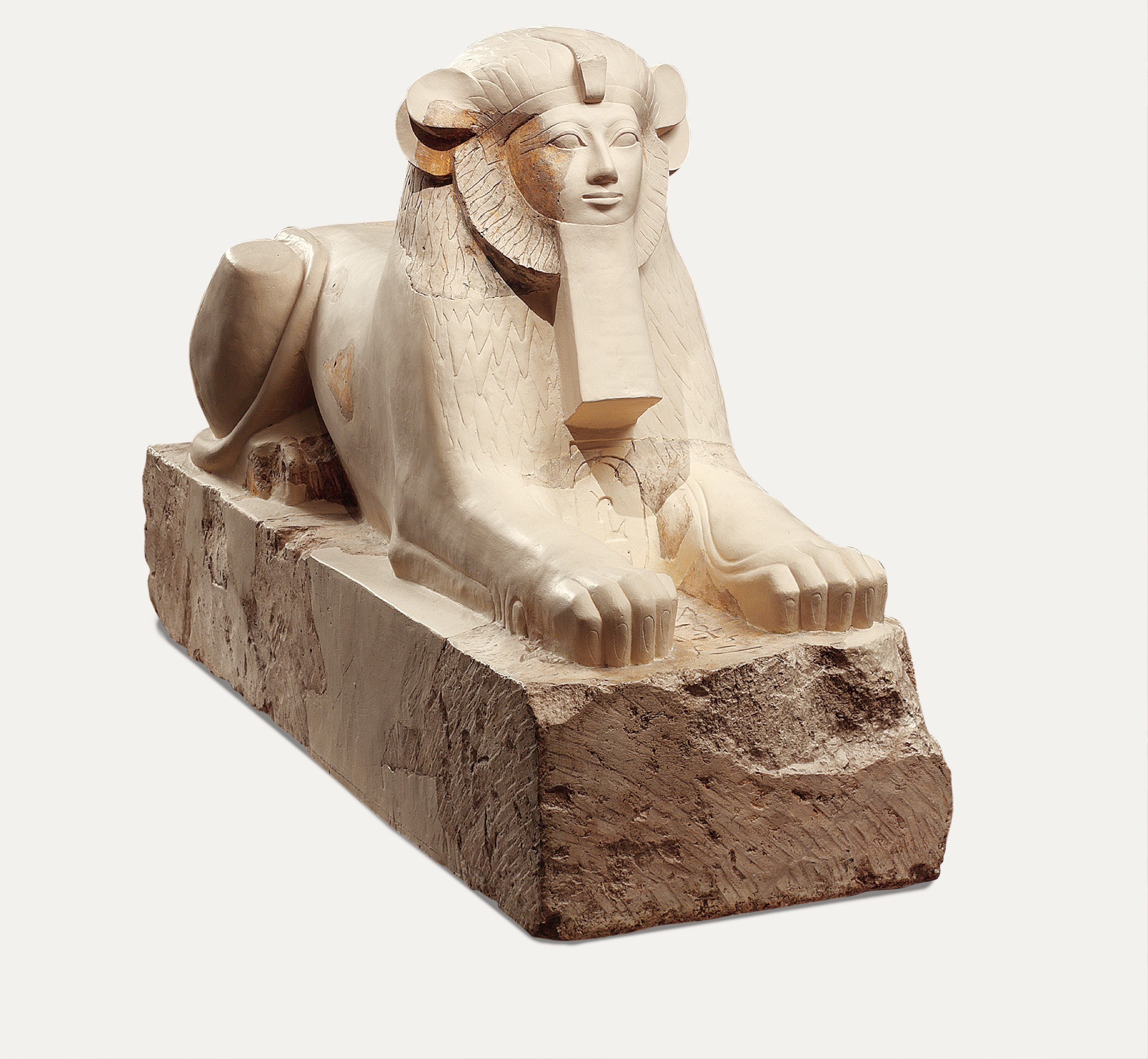On view at The Met Fifth Avenue in Gallery 115. This colossal sized head and shoulder bust depicts Hatshepsut the female pharoah who came to the throne of Egypt in 1478BC and reigned for about 20 years.

Sphinx Of Hatshepsut New Kingdom The Metropolitan Museum Of Art
See more articles in category.

. A female depicted as a male king. It was originally made for Hatshepsuts funerary temple at Deir el-Bahri which is a complex of temples dedicated to pharaohs of her family. The sculpture of the Sphinx of Hatshepsut depicts.
Sphinx of Hatshepsut from ca. 14791458 BC is a sculpture of Pharaoh Hatshepsut as a sphinx made of granite that is attached to a rectangular base on the bottom. Sphinx Of Hatshepsut Illustration World History Encyclopedia.
King Tut disguised as Nefertiti. Artworks depicting men have historically referred to their powerful bodies or depicted them in leadership roles. Granite Sphinx Statue of Hatshepsut Sphinx statues have a long tradition in Egyptian history the earliest examples dating to the Old Kingdom and the most famous being the great sphinx of Giza.
This sculpture was part of a sphinx which was lost many years ago. Google Arts Culture features content from over 2000 leading museums and archives who have partnered with the Google Cultural Institute to bring the worlds treasures online. The sculpture of the Sphinx of Hatshepsut depicts.
This graceful life-size statue depicts Hatshepsut in female attire but she wears the nemes headcloth a royal attribute usually reserved for the reigning king. The sculpture of the Sphinx of Hatshepsut depicts. Hatshepsut Depicts same location.
A female depicted as a male king. Unless otherwise noted all details on the format provenance and original setting of both works are taken from the Metropolitan Museum of Arts catalog entries as are general impressions of each figures. Statue of Sebek-em-sauf Depicts same location.
She made sure not to be mistaken for anything but a legitimate pharaoh. A female depicted as a male king. What the artists looked like and experienced on a personal level.
In contrast women have tended to. She was one of the only and most powerful female pharaohs. Measuring 240 feet 73 meters long and 66.
Kneeling Statue depicts Queen Hatshepsut in a kneeling position. The face of the Sphinx is the idealized face of a male Pharaoh showing the stylized ceremonial beard and the striped head cloth worn by the Pharaohs which in this case represents serenity. The sculpture of the Sphinx of Hatshepsut depicts.
Head of a Sphinx of Senwosret III Depicts similar person. The Great Sphinx of Giza is a giant 4500-year-old limestone statue situated near the Great Pyramid in Giza Egypt. This is expressed as well in Hatshepsuts funerary tem-ple her greatest visible legacy.
It would have earned its patron a special role in Egyptian and architectural histo-ry whether built by a female or male. These majestic statues depicting the king with a lions body and a human headface are epitomes of the kings might and visual manifestations of his superhuman powers. A male pharaoh depicted as a woman.
Admin Send an email December 11 2021. This monument depicts the Akkadian victory over the Lullubi Mountain people. Though we can tell that she is female she has many male physical featuresher breasts are de-emphasized she has the classic beard of the pharaohs and wears the royal male headdress.
In the 12th century BCE a thousand years after it was originally made the Elamite king Shutruk-Nahhunte attacked Babylon and according to his later inscription the stele was taken to Susa. The Female Pharaoh Hatshepsut ca. This graceful life-size statue depicts Hatshepsut in female attire but she wears the nemes headcloth a royal attribute usually reserved for the reigning king.
Who was the emperor of rome when jesus was born. This colossal sphinx portrays the female pharaoh Hatshepsut with the body of a lion and a human head wearing a nemes headcloth and false beard. It was carved from fine-grained gypsum and also depicts a mythological hybrid creature with a human head a lions body and the wings of a great bird of prey.
A female depicted as a male king. This was a way of showing her power and dominion. This limestone and plaster piece depicts the female pharaoh Maatkare Hatshepsut as a sphinx.
This sculpture was part of a sphinx which was lost many years ago. She is considered to be one of Egypts most successful rulers. This seven-ton granite Sphinx of Hatshepsut has the body of a lion and a human head wearing a head-cloth and royal beard.
The sculpture of the sphinx of hatshepsut depicts. This colossal sized head and shoulder bust depicts Hatshepsut the female pharoah who came to the throne of Egypt in 1478BC and reigned for about 20 years. The sculpture of the Sphinx of Hatshepsut depicts.
Hatshepsut chose to be represented as a male Pharaoh despite her gender. Artists can emphasize the importance of a ruler by portraying him or her. Sculpture depicts her as a sphinx.

Sphinx Of Hatshepsut New Kingdom The Metropolitan Museum Of Art

Sphinx Of Hatshepsut New Kingdom The Metropolitan Museum Of Art

File Sphinx Of Hatshepsut Met 31 3 166 F White Jpg Wikimedia Commons

Sphinx Of Hatshepsut Illustration World History Encyclopedia

File Sphinx Of Hatshepsut Met 31 3 166 F Gradient Jpg Wikimedia Commons

Sphinx Of Hatshepsut New Kingdom The Metropolitan Museum Of Art

File Sphinx Of Hatshepsut Jpg Wikimedia Commons

Sphinx Of Hatshepsut New Kingdom The Metropolitan Museum Of Art
0 comments
Post a Comment